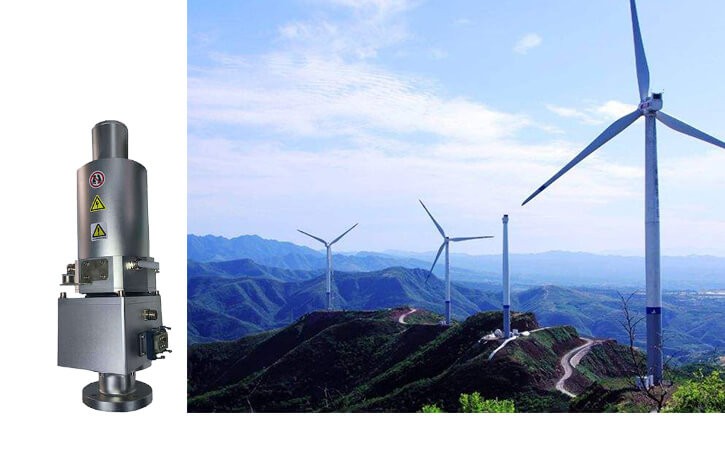Slip rings have proven quite useful in the wind power technology industry and they are almost inseparable from modern wind turbines. This solid metal slip ring wind turbine is designed for harsh operating environments that feature all outdoor elements, including humidity, temperature fluctuations, pressure, dust, and leaks.
It seems like advancements in wind power technologies also necessitate an upgrade of slip rings used in the turbines. Slip rings, which are electromechanical devices designed to transmit power (electricity) or data signals from stationary to rotating components, come with varying specifications. Each model is optimized for installation in a specific wind turbine and unique operating conditions. However, despite being application-specific, you can still find standard wind turbine slip rings.
Slip Ring Role in Wind Turbines
Slip rings come in different types, including through bore, pancake, USB, FORJ, and PCB slip rings, among other distinctions. You can also find pneumatic and hybrid models that may feature pancake design paired with PCB material. Virtually all slip rings play one leading role, which is to convert power and data signals from a stationary to a rotating part. Some slip rings, especially those in induction motors, are used to insert resistance, rather than transmit signals while others can achieve both functions.
Also known as rotary joints, slip rings feature two main parts, which are the carbon-graphite brush and metal ring. In most models, the brush remains stationary while the inner metal alloy ring (shaft) rotates. You can also find models where the ring remains fixed while brushes are joined to the inner side of a rotating housing. The essence is to create a slipping contact that permits the transmission of power and data signals between fixed interfaces and parts, making infinite 360-degree rotations. In wind turbines, slip rings play their primary role in signal transmission and resistance.
Wind Turbine Slip Ring Design Differences
A standard full assembly slip ring features the brushes, metal alloy ring, bearing, end caps, and additional surface structures. Technically, the brush and ring are enough to qualify such devices as slip rings, so the extra harnesses will depend on the specific application. Wind turbine slip rings feature advanced design and technology, called upon to meet the demands of their operating conditions. The specifications will largely depend on the type and position of the wind turbine.
However, standard models are expected to feature sturdier materials, weatherproofing, insulation, advanced plating for contact surfaces, and more. There are various wear and tear elements that can compromise the functionality of wind turbine slip rings. Common culprits include dust, which can result in lost contact and conductivity, oil and water leakage, sand, and humidity. Heights can impact pressure specifications and the temperature is also another crucial aspect. It all depends on the unique requirements and specifications.
Selecting and Using Slip Rings
Slip rings are application-specific electromechanical devices designed with specifications customized for the equipment where they are installed and unique operating conditions. When wind turbine slip ring selection, it is essential to choose the most suitable design for your system. Here are a few tips for finding precise specifications and properties for your wind turbine:
Environmental Considerations: Wind turbines operate in harsh conditions, including exposure to moisture, dust, and extreme temperatures. Ensure that the wind turbine slip ring selection includes designs with adequate sealing and corrosion resistance to withstand these environmental challenges.
Current and Voltage Requirements: Determine the maximum current and voltage requirements for the turbine’s electrical system. The slip ring must be capable of handling these values without overheating or causing power loss.
Size and Mounting Options: Select a slip ring that fits the available space in the turbine nacelle while ensuring proper mounting options for seamless integration with other components.
Maintenance Requirements: Opt for a slip ring that minimizes maintenance needs, as frequent maintenance and replacements can be costly and time-consuming. High-quality, long-lasting slip rings designed for wind turbines should require minimal upkeep.
Longevity and Durability: Choose a slip ring with a proven track record of durability and longevity to reduce downtime and maintenance costs, ensuring consistent performance throughout the turbine’s operational life.
By carefully considering these factors, operators can ensure the wind turbine slip ring selection meets the specific needs of their system, enhancing the turbine’s reliability, efficiency, and overall performance.
Conclusion
Slip rings have become essential components of wind turbines and other wind power technology motors. Because of their flexibility, they can be 100% customized to be installed in the wind turbine and withstand operating conditions. It is essential to find reputable vendors that can provide high-quality custom slip rings optimized for their unique applications. If you aren’t sure, request professional insight from the vendor. Whether you are looking for fiber brush technology or precious metal plating, make sure these and all other specifications are sent to the vendor.
See What We Can Do

